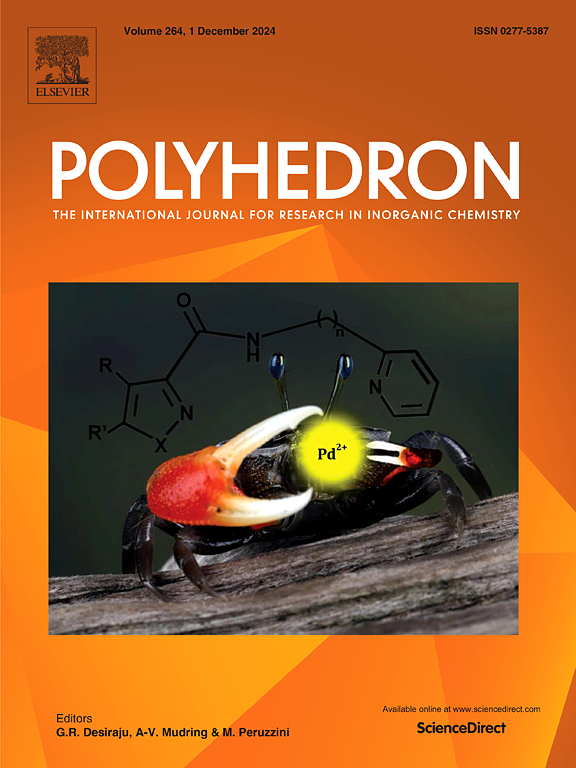Structural, photosensitive and radiation shielding characteristics of tungsten alkali borate glasses for photonic and radiation shielding applications
IF 2.4
3区 化学
Q2 CHEMISTRY, INORGANIC & NUCLEAR
引用次数: 0
Abstract
Dy3+ ions doped Tungsten Alkali Borate (TAB) glasses were synthesized by conventional melt-quench technique and characterized for photonic device and radiation shielding applications. The structural analysis was done through XRD and FT-IR measurements. From the FT-IR spectra, the OH content present in the as prepared glass samples has been estimated and it is relatively low compared with other glasses. The Judd-Ofelt (J-O) theory was utilised to validate the experimental results and to evaluate the radiative parameters of the glasses. The effect of local ligand field environment around Dy3+ ions has also been understood from J-O intensity parameters. In the photoluminescence (PL) spectra, three emissions in bluish (4F9/2 → 6H15/2), yellowish (4F9/2 → 6H13/2) and reddish (4F9/2 → 6H11/2) regions were observed. A range of radiative properties along with CIE co-ordinates were measured to identify the optimum glass suitable for solid state device applications. Number of radiations shielding parameters were calculated to know the appropriate glass for x-ray and gamma rays shielding applications.

求助全文
约1分钟内获得全文
求助全文
来源期刊

Polyhedron
化学-晶体学
CiteScore
4.90
自引率
7.70%
发文量
515
审稿时长
2 months
期刊介绍:
Polyhedron publishes original, fundamental, experimental and theoretical work of the highest quality in all the major areas of inorganic chemistry. This includes synthetic chemistry, coordination chemistry, organometallic chemistry, bioinorganic chemistry, and solid-state and materials chemistry.
Papers should be significant pieces of work, and all new compounds must be appropriately characterized. The inclusion of single-crystal X-ray structural data is strongly encouraged, but papers reporting only the X-ray structure determination of a single compound will usually not be considered. Papers on solid-state or materials chemistry will be expected to have a significant molecular chemistry component (such as the synthesis and characterization of the molecular precursors and/or a systematic study of the use of different precursors or reaction conditions) or demonstrate a cutting-edge application (for example inorganic materials for energy applications). Papers dealing only with stability constants are not considered.
 求助内容:
求助内容: 应助结果提醒方式:
应助结果提醒方式:


